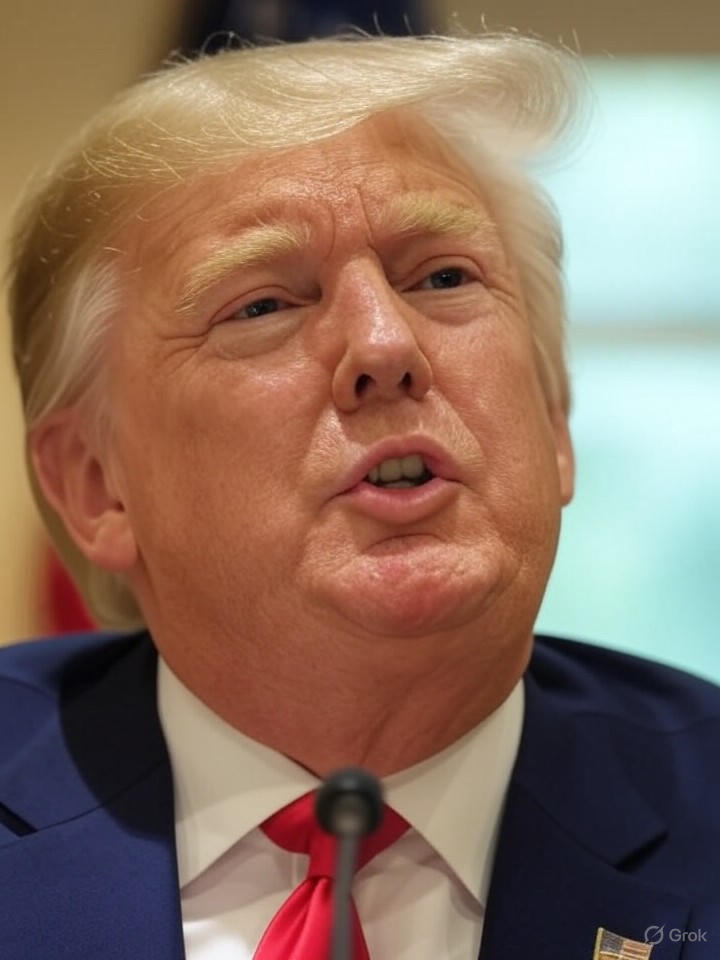The Escalating Trade War
As President Donald Trump’s sweeping tariffs take hold in 2025, the global economy is grappling with profound disruptions. Implemented under the banner of reciprocity and national security, these measures have imposed duties averaging 18.2% on imports from over 60 nations, according to recent analyses. The White House’s declaration of a national emergency in April, as detailed in a fact sheet from the White House, aimed to rebuild American competitiveness, but early data suggests a more complex reality. Economists project that these tariffs could shave off up to 0.9% of U.S. GDP this year alone, with ripple effects extending far beyond American borders.
The immediate fallout has been felt in consumer prices and corporate bottom lines. Households are facing an average annual cost increase of about $1,300, as calculated by the Tax Foundation in their August 4 report. This tax-like burden stems from higher prices on imported goods ranging from electronics to apparel, exacerbating inflationary pressures amid already slowing growth. Meanwhile, U.S. exporters are reeling from retaliatory measures, with agricultural sectors particularly hard-hit as trading partners like China and the European Union impose counter-tariffs.
Winners in Domestic Industries
Yet, not all sectors are suffering uniformly. Certain American industries stand to gain from the protective barriers. Steel and aluminum producers, for instance, have seen a resurgence, with domestic output rising by an estimated 12% since the tariffs’ expansion, per data from J.P. Morgan Global Research in their July 30 update on U.S. tariffs. Companies like U.S. Steel have reported improved margins as imported competition diminishes, allowing them to capture a larger market share. This aligns with Trump’s vision of reindustrialization, where protected manufacturing hubs in the Midwest could see job gains, potentially adding 50,000 positions in heavy industry by year’s end.
Beyond manufacturing, some technology firms are benefiting indirectly. As tariffs disrupt global supply chains, there’s a push toward onshoring production, boosting investments in U.S.-based semiconductor facilities. The New York Times noted on July 29 that this “reshaping of global trade” is creating opportunities for domestic innovators, even as overall economic growth projections dip to 1.6% for 2025, down from earlier estimates of 2.8%.
Global Losers and Retaliation Risks
On the international front, the tariffs are creating clear losers, particularly among emerging economies reliant on U.S. markets. India, for example, faces a 50% tariff on 55% of its exports starting August 27, targeting textiles, seafood, and jewelry, which could slash its export volumes by 40-50% and lead to massive job losses in micro, small, and medium enterprises. This development, highlighted in a recent VisaVerge report, underscores the vulnerability of developing nations to U.S. policy shifts.
China, long a focal point of Trump’s trade agenda, is pivoting exports to ASEAN countries to mitigate losses, but not without costs. The Penn Wharton Budget Model’s April 10 analysis projects that Trump’s tariffs could reduce U.S. GDP by about 8% and wages by 7% in the long term, with a middle-income household facing a $58,000 lifetime loss—figures that dwarf the impact of equivalent corporate tax hikes. Globally, the IMF has revised world growth downward by 0.5% for 2025, attributing nearly all of it to these U.S. policies, resulting in an $800 billion loss over two years.
Consumer and Corporate Strain
American consumers are among the most immediate losers, with rising costs compounding economic slowdowns. Posts on X from economic analysts, including those citing Yale Budget Lab data, indicate households are paying an extra $2,400 annually due to tariffs, while manufacturing jobs have actually declined by 14,000 in the last quarter. This sentiment echoes broader concerns, as Bloomberg’s August 7 article on Trump’s tariffs winners and losers warns of stalled hiring, inflation spikes, and declining home values.
Corporations are navigating a minefield of uncertainty. General Motors recently reported challenges from supply chain disruptions, contributing to a broader trend where exports have been slashed by 18.1%. The Penn Wharton Budget Model emphasizes that these tariffs’ harms are twice as severe as revenue-equivalent tax increases, potentially leading to 258,000 job losses in the last quarter alone.
Long-Term Economic Repercussions
Looking ahead, the tariffs’ experiment carries risks of entrenched inflation and reduced global cooperation. The Business Times, in a report echoing Straits Times insights on who loses the most from Trump’s tariffs, predicts a smaller world economy overall, with new tensions straining alliances. While some U.S. sectors win short-term protections, the net effect—per OECD and FactSet projections—points to uncertainty, with GDP growth hampered and unemployment ticking up to 4.2%.
Allies like Canada and Mexico are pushing back through negotiations, but retaliatory tariffs could escalate into a full-blown trade war. Economists warn that without adjustments, the long-term drag on wages and productivity might outweigh any gains, leaving the U.S. economy more isolated and less dynamic. As 2025 unfolds, the true balance of winners and losers will depend on how swiftly global markets adapt—or retaliate.




 WebProNews is an iEntry Publication
WebProNews is an iEntry Publication